CONTEMPORARY LANDSCAPE ARCHITECTURE WORKBOOK
By Trang Vu LA704

CONTENTS
01 Landscape Architecture: Origins & Foundations
Work experience and year out in practice
The landscape institute
History of li and key figures
Pathway of Chartership
Code of conduct
CPD requirements
Key publications
Pathway to chartership syllabus
02 Diversity of Landscape Practice
Different types of career paths
Different company types and sectors
Who do we work with as a professional?
Organisations and public bodies we work with as a professional
Types of work in practice
03 Getting Projects Built
Fee bidding
Work stage
Pre-site process - key stages
Pre-site process - key documents
Consultant team
On-site process - key stages and processes
Key meetings
5 methods to ensure quality on site
Key personal and duties
04 Landscape Legislation
Legal liabilities in practice
Health and safety legislation in practice
CDM - the construction (design and management) regulations 2015
Environmental legislation and designations in practice
Planning legislation development control
Heritage and conservation designations
05 Life as a Landscape Architect
Methods for winning work
Challenges of life as a landscape architect
Challenges of life as a
Landscape architect
Developer objectives and landscape value
Office set up and running costs
Facing challenges
Global environmental challenges
Landscape theory
06 Meeting the global environmental challenges
Landscape architects and net-zero target
Planting more trees
07 Contemporary landscape practice
Theory in contemporary landscape practice
Landscape architecture and impact of artificial intelligence (AI)
08 Day Trip- Manchester
Mayfield park
Castlefield park
09Personal Manifesto
Personal manifesto
Landscape Architecture: : Work experience and The Landscape Institute
01
WORK EXPERIENCE AND YEAR OUT IN PRACTICE
HIGHLIGHTS AND CHALLENGES YOU HAVE EXPERIENCED SO FAR IN WORKING LIFE?
In the group discussion about our experience so far, we had a interesting consevation between people with difference background, those met in MA landscape architectect course. We shared personal experiences of workig in practice
Hightlight
Tan: Landscape set design for Netflix
Challenges
Tan: Misunderstanding of the profession by others
Emily: Running a JCLI contract
Trang: Site visits before and during project to present to councillors and residents
El : Developing skills through mentoring - digital software and understanding design process
Yazid: Parametric design and sustainable architecture
Rosemary: Working with experienced professionals who have seen the profession evolve
Emily: 8 hours in front of the computer contract
Trang: Collaborate and communicate with project stakeholders and residents
EEl: Miscommunication with consultants contract
Yazid: Getting clients on board with vision/ delivering client needs and residents
Rosemary: Long-winded planning processcontract
THE LANDSCAPE INSTITUTE
What is the LI?
“The Landscape Institute (LI) is the chartered body for the landscape profession. It is an educational charity that promotes the art and science of landscape practice.”(2)
Who do the LI provide services to?
A wide range of professionals including:
• Landscape scientists
• Landscape Architects
• Planners
• Landscape Managers
• Urban Designers
What services do they provide?
The Landscape Institutes’s aim
Supporting landscape practitioners
They support members through advocacy programmes, events and numerous networking activities, many of which are organised through our branches across the UK. To helps our members achieve the highest standards in landscape practice.
Representing landscape professionals
They work with governments to ensure the voice of landscape professionals is heard on a range of policy issues. they are the voice of the profession on topics such as housing, flooding, public health, sustainability, farming and much more.
Promoting landscape practice
They champion the great work done by landscape practitioners through the press, broadcast and digital media, events and exhibitions, recognising and celebrating their work each year with the LI Awards.
Providing a library and archive different resources useful for all different aspects of the landscape world. Including a collection of different case studies, CPD events and professional and technical publications.
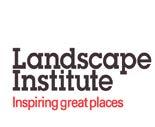

Sumerian civilisation 40001900BC
1828: The term landscape architecture was first used by Gilbert Laing Meason in his book On The Landscape Architecture of the Great Painters of Italy.
1863: Landscape Architecture first used by F.L. Olmstead to describe a professional designing public open space.
1929: Landscape Institute formed
Sumerian civilisation 40001900BC
1828: The term landscape architecture was first used by Gilbert Laing Meason in his book On The Landscape Architecture of the Great Painters of Italy.
1863: Landscape Architecture first used by F.L. Olmstead to describe a professional designing public open space.
1929: Landscape Institute formed
HISTORY OF LI AND KEY FIGURES

Landscape architectureInternational context
Landscape architectureEurope
IFLA EFLA + ECLAS + ELASA
Established in UK in 1948 (1930’s - Brussels, Paris, Berlin).
Vision:
“IFLA will be the leading international body promoting the creation of a globally sustainable and balanced living environment from a landscape architectural perspective.”
Objectives:
1. To establish, develop and promote the profession,discipline and education of landscape architecture, on an international basis.
2. To establish, develop and promote the highest standards of education and professional practice influencing the widest range of landscape architectural operations.
3. To develop and promote international exchange of knowledge, research, skills and experience in all matters related to landscape architecture across all cultures and communities.
Essentially promoting the establishment of the profession worldwide...
• Conferences.
• Work with governments.
• Student competitions.
• Committees (education, practice, communications , finance).
• e.g. Leeds course complies with the IFLA’s Professional Definition of the Landscape Architect.

The European Foundation for Landscape Architecture founded in 1989. Now known as IFLA Europe following agreement between IFLA and EFLA to become the European region of IFLA. Open to national associations for landscape architecture in countries which are members of the Council of Europe.
IFLA Europe works closely with:
• ECLAS The European Council for Landscape Architecture Schools - ECLAS exists to foster and develop scholarship in landscape architecture throughout Europe.
• ELASA The European Landscape Architecture Students Association:
• Promotes the support, cooperation, exchange of ideas between landscape architecture students.
• Holds an annual meeting (summer) and a smaller mini-meeting (spring).
• Every meeting organised in a different country by


This Code sets out the standards of professional conduct expected of all members of the Landscape Institute, irrespective of grade or membership level
This Code has also been designed to align with the International Federation of Landscape Architects (IFLA) Global Ethical Principles

There are 11 rules which are summarised below
1. You must deliver landscape services in ways which promote sustainable development and the environmentally responsible use of resources.
2. You must deliver landscape services in a manner consistent with the principles of equity, diversity and inclusion and must not unlawfully discriminate against others.
3. You must uphold the reputation and dignity of the landscape profession and that of the Landscape Institute.
4. You must ensure that your landscape business is managed properly and in accordance with relevant legal requirements.
5. You must have appropriate professional indemnityinsurance covering relevant landscape services.
6. You must only provide services you are competent to deliver.
7. You must undertake CPD in accordance with the Landscape Institute’s requirements.
8. You must aim to deliver the safest, highest quality landscape service, consistent with your professional obligations, in the public interest and in accordance with relevant legal requirements.
9. You must ensure there is an appropriate process in place to deal promptly and effectively with complaints about the landscape services you provide.
10.You must avoid conflicts of interest where possible, and ensure they are declared and managed appropriately where they arise.
11.You must act with integrity in your relationship with clients, other professionals, the public, and the Landscape Institute.
IFLA, EFLA & ECLAS THE LANDSCAPE INSTITUTE CODE OF CONDUCT
https://www.landscapeinstitute.org/member-content/cpd/
Orchard Place, London City Island, Chris Blandford Associates (finalist, Excellence in Landscape Design, Landscape Institute Awards 2021
THE LANDSCAPE INSTITUTE
CPD REQUIREMENTS
Continuing professional development (CPD) is the ongoing process of professional growth and skills development throughout a practitioner’s career. It is a commitment by members to maintain their professional competence, knowledge and relevance in a challenging and fast-moving professional environment.
As the Royal Chartered Body for the landscape profession, the Landscape Institute is responsible for ensuring our members uphold the very highest standards of conduct, professionalism and skill. All LI members – excluding Affiliate, Retired, and Student members, as well as those who are on the Pathway to Chartership – must complete a minimum of 25 hours of CPD every year.
The following provides some examples of different types and methods of professional development activity: Home-based learning – private study, structured reading on particular themes or topics. Use of audio, video or multi-media resources and other distancelearning material
Action-based learning – a systematic, structured approach to the solving of problems in the workplace
Preparation of material – for courses, technical meetings or publication in the technical press Research – supervised research Work based development –background reading, research or preparation required to tackle a new area of work, visiting landscape projects, supporting colleagues or mentoring students.
IT skills development
LI activities – of a technical or professional nature
Events – conferences, seminars, workshops or other technical and professional events and meetings including in-house training.
Can include soft skills as well as technical skills e.g. presenting, managing a team
Study – courses leading to a qualification, short academic courses, open or distance learning, individual study, attending lectures and seminars. Delivering lectures and tutorials
Members must now devote at least 10 hours to structured, ‘formal’ learning such as CPD training events (whether free or paid), webinars, workshops etc. In addition, at least 5 hours per year must include topics related to climate, sustainability, resilience, and environmental and biodiversity net gain.
THE LANDSCAPE INSTITUTE
Biodiversity
‘Biodiversity is in decline. The UK State of Nature report in 2019 showed a decline of 13% in species abundance’
Biodiversity Net Gain (2022)
The Environment Act 2021, a significant piece of legislation that overhauls and replaces EU environmental frameworks, includes a commitment to halt species decline by 2030. As part of this commitment, the Act introduces a requirement for development in England to deliver at minimum a 10% net gain in biodiversity.
Legislators expect this requirement to come into force for almost all land developments in England by November 2023, and for nationally significant infrastructure projects by 2025.
Action plan (2020)
The Landscape Institute has published an action plan outlining how we as an organisation will respond to the biodiversity and climate change emergencies. In it,they describe how they will: Equip the profession to provide solutions
Regulate and monitor the sector to encourage greater sustainability
Advocate with governments and industry for measures to address the crisis
Lead through our own sustainable business operations

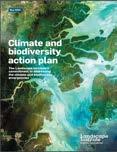

Climate Change
‘The LI has worked for over 90 years to protect, conserve, and enhance the natural environment. But now we find ourselves in a time of international crisis’
The UK hosted the 26th UN Climate Change Conference of the Parties (COP26) in Glasgow in October and November 2021.
Landscape for 2030 is an evolution of our 2008 climate change position statement that establishes landscape as a leader in the fight against climate change.
PUBLICATIONS
KEY
THE LANDSCAPE INSTITUTE
KEY PUBLICATIONS
Green infrastructure (GI)
‘One of the fundamental elements of landscape practice. It refers to planned networks of natural features in and between communities, including open green spaces, waterways, and other vegetative systems.
• March 2013 position statement sets out why GI is crucial to a sustainable future and showcases a range of successful GI projects.
Green infrastructure: an integrated approach to land use (2013)
Our March 2013 position statement sets out why GI is crucial to a sustainable future and showcases a range of successful GI projects.
Aimed at public and private sector bodies, this publication is useful for both clients and practitioners. The guide shows how collaboration is key to delivering multifunctional landscapes, and why landscape professionals should take the lead on GI integrationand for nationally significant infrastructure projects by 2025.
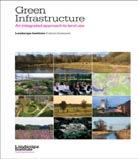
Green infrastructure: connected and multifunctional landscapes (2009)
The LI published our very first position statement on GI in April 2009

Public health
‘Health’ describes a state of complete physical, mental and social wellbeing, and ‘public health’ is concerned with the health and wellbeing of whole populations. The term ‘healthy landscapes’ describes places designed to promote good health and wellbeing. and showcases a range of successful GI projects.
Public Health and Landscape: Creating healthy places set out the following five principles for healthy places:
1. Healthy places improve air, water and soil quality, incorporating measures that help us to either adapt to climate change or mitigate its impact on us.
2. Healthy places help overcome health inequalities and promote healthy lifestyles.
3. Healthy places relax people, increase social interaction –and reduce anti-social behaviour, isolation and stress.
4. Healthy places optimise opportunities for working, learning and development.
5. Healthy places are restorative, uplifting and healing for both physical and mental health conditions.

‘Public health and landscape’ also features 22 projects that show how these principles can be applied.
THE LANDSCAPE INSTITUTE
PATHWAY TO CHARTERSHIP SYLLABUS
The Pathway to Chartership is the process by which landscape professionals qualify as Chartered members of the Landscape Institute (LI) in the UK.
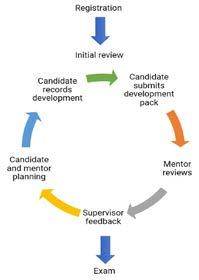
THE 6 ELEMENTS TO CHARTERSHIP
The four core elements are about the key aspects of professional practice.They are:
1. Professional judgment, ethics and values.
2. Organisation and management.
3. Assessment.
4. Implementation.
The two underpinning elements are:
5. Options and strategies.
6. Continuing professional development
1. PROFESSIONAL JUDGMENT, ETHICS AND VALUES
• Understand what it means to be a professional, the ethical dimension to your actions and responsibilities as a chartered landscape professional.
• Understand LI’s Code of Conduct.
• Understand the wider contexts of Landscape Architecture.
• Recognise the expertise from other disciplines.
2. ORGANISATION AND MANAGEMENT
• Understand the legal requirements and obligations .
• Health & Safety requirements and guidelines.
• Tenders, organisation and timing skills.
• What good management looks like in practice.
3. ASSESSMENT
• Understand the legislation, requirements, procedures and policies.
• How to identify client/stakeholder requirements and take steps to establish a professional working relationship.
• Use various techniques to assess the significance and context of the landscape / site.
• Record and report the findings of assessments appropriately.
4. IMPLEMENTATION
• How detailed project plans and budgets are developed with clients.
• How tendering processes for contractors are managed on behalf of the client.
• How to agree contractual arrangements for work with contractors.
• How to monitor, control and manage project through to completion and handover.
5. OPTIONS AND STRATEGIES
• Identify options, opportunities and constraints pertinent to landscape work in your area of practice.
6. CONTINUING PROFESSIONAL DEVELOPMENT
• Keep yourself informed of changes affecting the profession.
• Ensure your practice, knowledge, skills and techniques are up to date.
• Reflect and learn.
• Contribute to the development of the profession
THE LANDSCAPE INSTITUTE
CODE OF CONDUCT AND CPD REQUIREMENTS
CODE OF CONDUCT
“As a professional organisation constituted under a Royal Charter, the Landscape Institute seeks to protect, conserve and enhance the natural and built environment for the benefit of the public through the promotion of landscape architecture. It places a strong emphasis on the integrity, competence and professionalism of its members, and therefore requires all members to conduct themselves in accordance with a Code of Conduct within their professional and business life.”
The Code should be considered central to the professional life of a Landscape Professional not only as a source of ethical guidance, but also as a common-sense indicator to principles of good practice. It is only through the maintenance of high standards by individuals that landscape architecture as a whole will be served, the public will be protected and the professionas a whole will thrive.
PROFESSIONAL CONDUCT
• If loss or damage is suffered as a result of the action of a member of the Landscape Institute, the first course of action is to seek to reach an agreement with the member through negotiation or mediation, or redress through arbitration or through the courts.
• If a member of the public is dissatisfied with the professional conduct of a Landscape Institute member or dissatisfied with a service provided by the Landscape Institute and wishes to make a complaint, the procedure is set out below.
COMPLAINTS AGAINST MEMBERS
• The Landscape Institute is responsible for ensuring that its members meet the requirements of the Code of Conduct.
• Guidelines for Making a Complaint gives advice to anyone who may be dissatisfied with the professional conduct of an Institute member.
• The guidelines aim to assist in determining whether there are grounds for making a complaint, set out the steps someone would need to follow to make a complaint and the process that will be undertaken in reaching a decision.
Matters the Landscape Institute can investigate:
• The Landscape Institute only has powers to deal with LI members’ breaches of the organisation’s By Laws, Rules, and Regulations.
Matters the Landscape Institute cannot investigate:
• It is important to note that the LI does not resolve the complaint itself – that remains a matter between the complainant and the member concerned. The LI can only investigate matters that relate to breaches of its rules or regulations.
The Institute cannot:
• Deal with concerns or complaints about anyone who is not a member of the LI.
• Pay compensation or instruct a member to do so.
• Determine whether a member or firm has acted negligently (this is for the courts to decide).
• Interfere with or become involved in court action against a member or firm.
13 STANDARDS
This Code lays down 13 standards of professional conduct and practice expected of all members of the Landscape Institute, whatever their grade or level of membership.
STANDARD 1:
The Landscape Institute expects members who are carrying out professional work to have regard to the interests of those who may be reasonably expected to use or enjoy the products of their work.
STANDARD 2:
The Landscape Institute expects members to uphold the reputation and dignity of their profession and their professional organisation.
STANDARD 3:
The Landscape Institute expects members to actively and positively promote the standards set out in this Code of Conduct.
STANDARD 4:
The Landscape Institute also expects members to actively and positively promote and further the aims and objectives of The Landscape Institute, as set down in its Charter, and to contribute to the work and activities of the Institute.
STANDARD 5:
The Landscape Institute expects members to act at all times with integrity and avoid any action or situations which are inconsistent with their professional obligations.
STANDARD 6:
Landscape Professionals should only undertake professional work for which they are ableto provide proper professional and technical competence, and resources.
STANDARD 7:
The Landscape Institute expects members to maintain their professional competence in areas relevant to their professional work and to provide educational and training support
to less experienced members or students of the profession over whom they have a professional or employment responsibility.
STANDARD 8:
The Landscape Institute expects members to organise and manage their professional work responsibly and with integrity and with regard to the interests of their clients.
STANDARD 9:
The Landscape Institute expects members to carry out their professional work with care, conscientiously and with proper regard to relevant technical and professional standards.
STANDARD 10:
Members of the Landscape Institute should only promote their professional services in a truthful and responsible manner and such promotion shall not be an attempt to subvert professional work from another member.
STANDARD 11:
The Landscape Institute requires member to ensure that their personal and professional finances are managed prudently and to preserve the security of monies entrusted to their care in the course of practice or business.
STANDARD 12:
The Landscape Institute expects members to have adequate and appropriate Professional Indemnity Insurance.
STANDARD 13:
The Landscape Institute expects that any complaints concerning the professional work of individual members or their practice should be dealt with promptly and appropriately.
CPD REQUIREMENTS
Key points:
• CPD year to align with LI seasonal year (1 July to 30 June).
• Minimum CPD requirement remains 25 hours per year but the nature and structure of these hours will change:
• Members will be require devote at least 10 hours to structured, ‘formal’ learning, e.g. CPD training events, Webinars, workshops etc.
• At least 5 hours per year must include climate, sustainability and resilience related topics.
• A more supportive approach to monitoring, with 3 months’ notice to review and complete records.
• Introduction of a new Waiver Policy to allow members to apply for waivers from CPD requirements dependent upon their circumstances.
02
The diversity of landscape practice
DIFFERENT TYPES OF CAREER PATHS
LANDSCAPE ARCHITECTURE
POSSIBLE JOB TITLES
Sustainable consultant
Sales/marketing
Landscape architect
Landscape planner
Sustainable consultant
Landscape artist
Lecturer/teaching
Garden designer
Strategic green infrastructure designer
Landscape contractor / Design & builder
Technical specialist
Product design/manufacturer
Landscape assessor



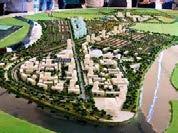

POSSIBLE SECTORS
Third sector:
e.g. Groundworks / Eden Project / National Trust / Wildlife Trust / LandscapeInstitute / Canals & Rivers Trust
Government/local authorities/governing bodies/planning & policy:
e.g. local councils / Forestry England / Environment agency
Private offices/consultancies/garden design /freelance:
e.g. TEL Landscape Architects / Gillespies
Large scale multi disciplinary firms:
e.g. Arup / Acom
Cooperatives:
e.g. Arup / City Design Cooperative
Glasgow
Plant nurseries/garden centres:
e.g. Barcham Trees
Education & research:
e.g. University/college/schools
DIFFERENT COMPANY TYPES AND SECTORS
• Companies
• Partnerships
• Sole Principal


COMPANY
Private Limited Liability Company (LLC) by shares:
• Most common type of company
• Have to register with company house, employ aN accountant and public their finances on a publicly accessible website.
• The amount that shareholders are liable is limited to the unpaid amount of the shares and the reserves of the company
Pros:
• Less personal risks- can’t seize personal assets
• Can be set up with small investments as there is no minimum capital requirement
Unlimited Private Companies:
Cons:
• Financial records and accounts have to be submitted and available for public scrutiny
• More expensive to run- hire separate accountant
• Subject to the same rules as a limited company however share-holders are personally liable for any debts.
• Accounts and finances don’t have to be submitted to company house.
Pros:
• Don’t have to submit private company information into the public domain
• Stakeholders can remain publicly anonymous
• Less Expensive than limited companies
•
•
•
•
Cons:
• Shareholders are liable for any debts and can have
• personal assets seizedMore expensive to run- hire separate accountant
DIFFERENT COMPANY TYPES AND SECTORS WHO DO WE WORK WITH AS A PROFESSIONAL?
PARTNERSHIPS (Unlimited Liability)
A partnership is less formal than a company, with freedom of action and privacy of its affairs. However, it is subject to unlimited liability with personal assets at risk, it has limited powers to borrow money, and thetaxation position is complex.
It is legally binding, and it has the benefits of mutual support and combined resources.
● Profits, capital and losses will be shared equally.
● Every partner is entitled to take part in the management of the business and to inspect the accounts.
● Every partner is entitled to dissolve the partnership at any time by giving notice to the other partners.
● Property brought into the firm or bought with the firm’s funds is partnership property
● There are no rights to remuneration for acting in the partnership business.
● No new partners may be introduced, no fundamental changes can occur to the nature of the partnership and no partner may be expelled, unless majority consent is gained.
Pros:
• Fairly simple to set up.
• Partners can share the workload and even out fluctuations.
• A partnership ethos exists.
• Liability is shared between partners
Cons
• Unlimited personal liability – each partner is fully liable for business debts.
• The partnership is not a separate legal person.
• Possible conflict between partners.
• Need for discussion with partners before making business decisions.
• Agreement made by one partner is binding on all others.
• If a partner does not want to continue with the
• business, he cannot transfer his interest in the
• partnership to another person (there are no shares to transfer), so the partnership has to be dissolved and a new partnership set up
SOLE PRINCIPAL/TRADER
Sole principle is is owned by just one person:
They share in all of the company’s gains while also bearing all of its risks of business. They are solely liable for all debts made by the company, even if they are not required to answer toany business partners.
The sole proprietorship is a straightforward business form suitable for very small, first-time enterprises where there is already sufficient funding to conduct the enterprise and the enterprise is not dangerous.
Pros
Simple to set up.
Easy to make business decisions.
Efficient to run
No requirement to share the profits.
Close relationship with customers.
Can tax yourself instead of own accountant
Cons
Limited sources of finance
No one to share the workload.
Unlimited personal liability, i.e. personally responsible for all the losses.
Must provide all the capital to start the business.
THE DESIGN TEAM
• Client
• Stakeholders (charitable rganisations)
• Landscape Architect or contract administrator
• The project manager
• Quantity surveyor
• Other consultants
• The clerk of works
• The planning supervisor / CDM –
Principle Designer
• Land owner
• Access officers (accessible to visually impaired)
• Architect
• Drainage engineer
• Geotechnical engineers
• Acoustic engineers
• Ecologist
• Arboriculturalists
• Artists / sculptures
• Hydrologists
• Geologists
• Horticulturists
• Transport planners
• Heritage Officers
• Community engagement officers
• Funders
• Civil and Structural engineer M and E engineers (Mechanical and Electrical)
• Planners Interior Architecture
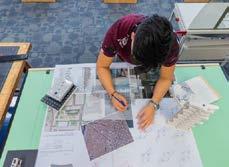

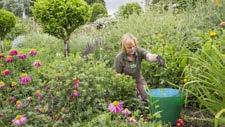
THE CONTRACTOR
• The contracts manager
• Site agent / foreman
• H&S representative
• Subcontractor


ORGANISATIONS AND PUBLIC BODIES WE WORK WITH AS A PROFESSIONAL PRIVATE ORGANISATIONS
• Privately owned land (Eg homeowners,communes)
• Community owned land (Eg Village Green)
• Private estates
• Incredible edible
• Permaculture/ agriculture (Earth repairs)
• Commercial development (Eg Business parks, retail parks such as Llay industrial estate - plant identification)
• Housing developers (Barratts etc)
• Tourism (Center parcs)
• Architectural firms/ Developers (EgWilmott Dixon)








PUBLIC BODIES
• District, Local, Parish Council - LVIA,
• Landscape Character Assessment
• Natural England
• Forestry Commission
• Environment Agency
• National Parks
• NHS - Hospital Gardens
• National Highways - Streetscape design
• Transport For London - Streetscape
• design
• Department for Education - New schools
• Historic England - Park restoration

TYPES OF WORK IN PRACTICE


• Community Gardens
• Public Open Space
• School Grounds
• Forest Schools
• Parklands
• National Parks (eg Maintenance Plans)
• LVIA and EIA
• Hospital gardens
• Conservation
• Highways, transportation structures and bridges
• Renewables - Solar Energy, Wind Energy
• Landscape Management Plans

03 GETTING LANDSCAPE PROJECTS BUILT
FEE BIDDING
What might the contents of a bid be if the project was to be from project from inception/briefing to completion (RIBA Stages 0-7) on site?
SUMMARY OF DOCUMENTS TO BE INCLUDED IN A BID OFFER
• List of staff with qualifications specified and experience
• List of subconsultants that will work on the project
• Financial guarantee: balance of profits or loss for the past 2 years, bank warranty or a provision
• Portfolio of work completed previously- usually projects relevant to the type of bid
• Availability: name the staff that will oversee the project
• Fee proposal
• A time frame scheduleoutlining when the project will be completed at different stages
• Architectural licenses
• A statement that you are open to negotiation – allows flexibility
WHAT IS A FEE PROPOSAL?
ARCHITECT’S FEE BID
ESTIMATE OF PROJECTED WORKLOAD
ANALYSIS OF PROFESSION AL SERVICES
ESTIMATE
CLIENT’S BRIEF
FEE BIDDING CIRCLE
The fundamental structure of the process in circular with all the elements being interdependent
‘‘A fee proposal is a proposal prepared by a consultant for a prospective client describing the services that the consultant proposes to undertake and the fee that will be charged. This may be in the form of a letter, or may be a more detailed document accompanied by a cover letter.’’ - designingbuildings.co.uk
FEE PROPOSAL: CONTENT
Marketing material / blurb summarising the qualities of the company. Experience relating to previous work of the organisation.
Methodology underpinning the overall process to be taken. Examples shown of the previous work or similar to relate to the proposed project
FEE CALCULATION: THE PROJECT (In-fitting with RIBA stages)
• Project type (hard/soft landscaping)
• Project location – transport costs, local consultation & site visits
• Project value
• Services required including unusual services
• Stages of work the landscape architect will be involved in the RIBA stages and specific plans required e.g. masterplans /construction drawings
• Level of appointment (main / subconsultant)
• Other consultants required
• Local data costs – GIS, BIM etc.
• Assumptions – Instructing what’s to be provided by external services
• Number of meetings
FEE CALCULATION: THE LANDSCAPE ARCHITECT’S ORGANISATION (Infitting with RIBA stages)
• Overhead costs – including premises, light, heat etc.
• Salary costs – pay, pensions etc.
• Finance costs – loans/interests/ payments/insurance
• Profit margin
• CVs – business hierarchy
• General office supplies
• Time charges according to business status
FEE BIDDING WORK STAGE
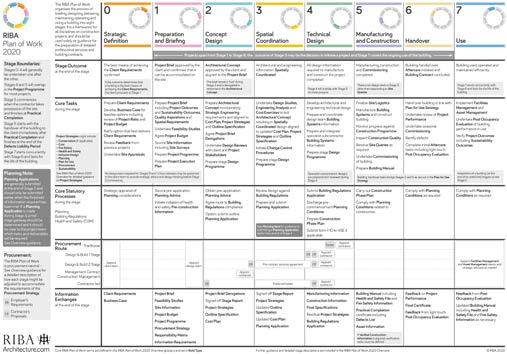
OF BUILDING CONTRACT OUTLINE SPECIFICATIONS & SPACE REQUIREMENT SCHEDULE
PRE-SITE PROCESS - Key Stages
Stage 0 - Inception - understanding brief, setting up a meeting , discussing the budget.
Stage 1 - Feasibility - Analysing our skills with the scope of the project, making decision to take up the project
Stage 2- Outline - Site analysis, attaining survey maps etc, Preparing an outline sketch of the design after consultation with clients, consultants, communities.
Stage 3- Sketch - refined outline design e.g planting and material palettes , CDMs risk assessment
Attain a letter of Agreement
Stage 4- Detailed- Produce technical drawings and completed package for submission to get approval, eg. Indicating species, size, densities, paving materials
Stage 5 - Tender Action - Create Bill of quantities, specification, technical drawings for tender package.
Stage 6 - Contracts Preparation - reviewing the tender returns, Contractor interviews,, Help client appoint a contractor suitable and competent
PRE-SITE PROCESS - Key Documents
Bid Document - Includes scope of works, deliverables, experience and success of previous projects, team CV’s and may include early design optioneering.
Schedule of works - A preliminary time frame in a form gantt chart, excel schedules etc. showing length of project and time frame of deliverables to an agreed stage.
Stage 1 - 4 Drawings ( Concept - Planning -Detail design)
Design and access statement - Document prepared to illustrate and justify the proposal (May be a requirement by local planning authority for submission) –
Specification Document - A detail report of all proposed works and materials used for the project
Bill of quantities - Preliminary cost of works
Tender pack - Collation of drawings and specifications for contractors and suppliers to price the project
Planning application approval document
Quantity Surveyor- Industry professional with knowledge of construction costs and contracts
Contractor- A person or firm that undertakes a contract to provide materials or labour to perform a service or perform a job
Project Manager- the person in overall charge of the planning and execution of a particular project
Heritage Consultant- Responsible for the management and conservation of heritage sites
Ecologist- A person with thorough knowledge of ecology who can provide advice on how to maximise biodiversity
CONSULTANT TEAM
Engineers- Provides technical information and who can assess the sustainability of a project
Suppliers- The company who provides the materials for a site
Planners- A person or company who practices urban or rural planning who can be collaborated with for design proposals
Clients/Project Funders- The person or company who initiated the project and who is paying for it ArchitectsA person or company who designs buildings who can be collaborated with for design proposals
Arboriculturalist- A person with knowledge of trees
ON-SITE PROCESS - Key stages and processes
1. Demolition and Site Clearing
2. Excavation and Trenching
3. Services Installation (Drainage, irrigation, electrical, etc)
4. Fine Grading
5. Hardscape Finishes
Construction (Paving, cladding, inorganic mulches)
6. Planting (Trees, plants, organic mulch)
7. Final Fixtures (Furnitures, pavilions, lighting, etc.)
8. Defects (Identity and fix problems)
9. Completion (Initial and Final)
Certificates required
The Conditions of Contract state that the contract administrator is to issue certificat There are two types of certificate:
• CERTIFICATES OF PAYMENT
• CERTIFICATES OF PROGRESS
Certificates of Payment:
The Progress Payment Certificate The Penultimate Certificate
The Final Certificate JCLI Maintenance
Certificate of Paymen
Certificates of Progress:
The Practical Completion Certificate
The Certificate of Non-Completion
The Certificate of Making Good Defects
KEY MEETINGS
1. Pre-Start/Pre-Contract Meeting
“When the contractor has been appointed by the client and the contract placed, an initial project meeting with the contractor and all others concerned should be arranged prior to works commencing on site. The meeting is held to establish contract procedure and administration and is usually chaired by the landscape architect (contract administrator). An agenda should be issued prior to the meeting that will include the following items for discussion:”
Introduction
Project
Contract
Statutory obligations
CDM/ Health and Safety matters
Contractual matters
Clerks of work’s matters
Consultant’s matters
Quantity surveyor’s matters
Communications and procedures
Meetings

2. On Site Meeting
“Holding meetings on site enables the stakeholders to see progress for themselves (rather than relying on a report for another party). Meeting minutes should be prepared, with a requirement that any disagreement with the items recorded in the minutes is raised within a pre-defined period (perhaps one week).”
Reporting progress
Cost reports
Discussion any problems or issues
Allowing the proposal of solutions
Discuss quality issues
Discuss sub-contractor reports
3. Progress Meeting
Progress meetings are held to establish the progress of the contractor in relation to the programme. They are also a mechanism for keeping all parties informed of the situation with the contract and any issues arising from the contract. They should be held at regular intervals over the contract period suitable to the length of the contract.
Typical agenda for a progress meeting:
Present
Minutes of last meeting
Matters arising from last meeting
Contractor’s progress: General report
- Subcontractor’s report - Progress and comparison with programme- Percentage of main items complete - Causes for delay
- Claims arising -Information received since last meeting -Information and drawings required, instructions required
5. Clerk of works report: Site matters –weather and general quality control- Lost time
6. Consultant’s report
7. Qs Report -Valuation and measurement- Updated cost reports
8. Health and Safety matters
9. Communication and procedures:
Drawings issued - Meetings heldInstructions issued
10. Contract completion date
11. Technical matters
12. Any other business
13. Date, time and place of next meeting

5 METHODS TO ENSURE QUALITY ON SITE
1. Ensure drawings are accurate before construction
2. Review drawings with the contractor before construction starts
3. Ensure contractor and project manager have sound experience and can deliver a high quality scheme
4. Regular site visits/ snagging (the process of checking a newly completed scheme for minor faults that need to be rectified.)
5. Ensure the contract includes a suitable defects and maintenance period for which the contractor is responsible for maintaining the site in line with the Landscape Management Plan (Preferably 5 years)

KEY PERSONAL AND DUTIES
THE CLIENT
The client is not a professional, therefore are not expected to know their responsibilities.
The Landscape Architect as the clients’ agent should advise the client of their role.
THE DESIGN TEAM
THE LANDSCAPE ARCHITECT/ CONTRACT ADMINISTRATOR
Is the agent of the employer and is appointed by the employer (client) directly.
The client is the employer
Deciding the functions which the scheme is to fulfill or instructing the landscape architect to investigate these functions.
• Deciding the approximate budget.
• Appointing a landscape architect; also a quantity surveyor and a clerk of works or other professionals if required.
• Signing the legal agreement or contract.
• Appointing a planning supervisor and principal contractor under the CDM regulations and ensuring sufficient resources will be allocated to enable the work to be carried out safely.
• Paying any money due for services directly to the contractor.
• Advise the client on the appointment of the contractor and the responsibilities of the client, the contractor and the landscape consultant under the terms of the contract documents.
• Prepare the contract documents and arrange for them to be signed by the client and the contractor and provide production information as required.
• Administer the contract during operations on site.
• Visit the site at intervals appropriate to the contractor’s programmed activities to inspect the progress and quality of the works.
• Check and certify the authenticity of accounts.
• Make periodic financial reports to the client and identify any variation in the cost of works/ expected duration of contract.
• Ensure client understands their responsibility regarding CDM regulations.
• Carry out all design and specification work in accordance with CDM regulations and prepare a risk assessment.
THE CLIENT
The client is not a professional, therefore are not expected to know their responsibilities.
The Landscape Architect as the clients’ agent should advise the client of their role.
The client is the employer
Deciding the functions which the scheme is to fulfill or instructing the landscape architect to investigate these functions.
• Deciding the approximate budget.
• Appointing a landscape architect; also a quantity surveyor and a clerk of works or other professionals if required.
• Signing the legal agreement or contract.
• Appointing a planning supervisor and principal contractor under the CDM regulations and ensuring sufficient resources will be allocated to enable the work to be carried out safely.
• Paying any money due for services directly to the contractor.
THE LANDSCAPE ARCHITECT/ CONTRACT ADMINISTRATOR
Is the agent of the employer and is appointed by the employer (client) directly.
THE PROJECT MANAGER For larger more complex projects. Employed by the client. The overall planning and coordination of the project from start to finish. Their overriding role is to coordinate, motivate, manage and maintain moral of the whole project team.
• Advise the client on the appointment of the contractor and the responsibilities of the client, the contractor and the landscape consultant under the terms of the contract documents.
• Prepare the contract documents and arrange for them to be signed by the client and the contractor and provide production information as required.
• Administer the contract during operations on site.
• Visit the site at intervals appropriate to the contractor’s programmed activities to inspect the progress and quality of the works.
• Check and certify the authenticity of accounts.
• Make periodic financial reports to the client and identify any variation in the cost of works/ expected duration of contract.
• Ensure client understands their responsibility regarding CDM regulations.
• Carry out all design and specification work in accordance with CDM regulations and prepare a risk assessment.
Acting on behalf of and representing the client.
• Providing a cost-effective and independent service.
• Managing different disciplines and expertise.
• Satisfying the objectives and provisions of the project brief from inception to completion
THE
PROJECT MANAGER For
larger more complex projects. Employed by the client.
The overall planning and coordination of the project from start to finish.
Their overriding role is to coordinate, motivate, manage and maintain moral of the whole project team.
Acting on behalf of and representing the client.
• Providing a cost-effective and independent service.
• Managing different disciplines and expertise.
• Satisfying the objectives and provisions of the project brief from inception to completion
THE QUANTITY SURVEYOR
• Responsible for working out quantities and costs.
• Integral to making designs a reality.
THE CLERK OF WORKS
• Engaged by the client or landscape architect.
• Works under supervision of the landscape architect.
• Keep detailed records and check everything is in line.
THE PLANNING SUPERVISOR (CDM COORDINATOR)
• CDM – (Construction Design and Management)
• The CDM coordinator is responsible for ensuring CDM regulations are adhered to by all parties.
• Measuring work on site and valuing any materials held on site.
• Preparing and submitting valuations to the landscape architect.
• Giving estimates of the cost of additional work involved/any savings of work omitted due to variation orders.
• Agreeing value of work with contractor.
• Preparing Bill of Quantities to cover such work.
• Measuring/calculating the value of work carried out and agreeing this with the contractor on completion of work.
• Submitting the valuation to the landscape architect.
• Advising landscape architect of financial aspects and implications of the labour/ material costs, insurance charges ect involved in design in construction.
Maintaining a register of drawings and all contract documentation.
• Notifying the landscape architect of; any errors in the contract documents, any significant problems on site and any decisions/variations required.
• Inspecting materials/goods for compliance with stated standards.
• Inspecting work for execution in accordance with the contract documents/instruction/variation orders.
• Issuing verbal instructions confirmed in writing by landscape architect within two days.
• Maintaining a daily diary recording; weather, instructions issued, attendance, labour on site, delays ect
• Submitting weekly reports on state and progress.
• Attending site progress meetings and confirming accuracy of progress report.
• Observing health and safety requirements.
Coordinating the health and safety aspects of the design and planning phase.
• Ensuring the principal contractor registers with the HSE fro construction work which is notifiable.
THE QUANTITY SURVEYOR
• Responsible for working out quantities and costs.
• Integral to making designs a reality.
• Measuring work on site and valuing any materials held on site.
• Preparing and submitting valuations to the landscape architect.
• Giving estimates of the cost of additional work involved/any savings of work omitted due to variation orders.
• Agreeing value of work with contractor.
• Preparing Bill of Quantities to cover such work.
• Measuring/calculating the value of work carried out and agreeing this with the contractor on completion of work.
• Submitting the valuation to the landscape architect.
• Advising landscape architect of financial aspects and implications of the labour/ material costs, insurance charges ect involved in design in construction.
THE CLERK OF WORKS
• Engaged by the client or landscape architect.
• Works under supervision of the landscape architect.
• Keep detailed records and check everything is in line.
THE PLANNING SUPERVISOR (CDM COORDINATOR)
• CDM – (Construction Design and Management)
• The CDM coordinator is responsible for ensuring CDM regulations are adhered to by all parties.
• Notifying the landscape architect of; any errors in the contract documents, any significant problems on site and any decisions/variations required.
• Inspecting materials/goods for compliance with stated standards.
• Inspecting work for execution in accordance with the contract documents/instruction/variation orders.
• Issuing verbal instructions confirmed in writing by landscape architect within two days.
• Maintaining a daily diary recording; weather, instructions issued, attendance, labour on site, delays ect
• Submitting weekly reports on state and progress.
• Attending site progress meetings and confirming accuracy of progress report.
• Observing health and safety requirements.
Coordinating the health and safety aspects of the design and planning phase.
• Ensuring the principal contractor registers with the HSE fro construction work which is notifiable. Maintaining a register of drawings and all contract documentation.
THE CONTRACTOR TEAM
04
LANDSCAPE LEGISLATION
LEGAL LIABILITIES IN PRACTICE
And issues that might affect you while working on a project on site as well as those while working in the office and employing others
WHAT TYPE OF LIABILITY CONCERNS A LANDSCAPE ARCHITECT?
Lliability in contract, liability as a member of a practice, an employer or employee, statutory liability, liability as an occupier, vicarious liability, liability as a professional, and liability in tort (negligence, libel, nuisance, trespass and strict liability
LIABILITY IN CONTRACT
When a party has no lawful excuse and refuses to perform the contract or fails in their performance of the contract).
AS A MEMBER OF A PRACTICE
Partnerships-A partner in this form of practice is able to speak or do business on behalf of the other partners and his decisions become binding on the others as well.
Limited Liability Partnerships (LLP) The key difference for partners in this type of practice is that they aren’t bound by other partners liabilities in tort
AS AN EMPLOYER
It is compulsory for employers to have employer’s liability insurance Relationship between employer and employee usually defined in an employment contract
There are also statutory rights contained in a number of Acts of Parliament which cover unfair dismissal, redundancy, maternity rights. health and safety, discrimination and more
AS AN EMPLOYEE
May be personally sued for negligence. This doesn’t happen usually, when the employee works as part of a practice which is likely to have Professional Indemnity Insurance and anindividual is unlikely to be able to meet such a claim
VICARIOUS LIABILITY
A person is responsible for their own tort, however If the employer has directed the work to an employee, the employer is also liable. If the employer has hired an independent contractor, they aren’t liable for the tort as long as they don’t interfere in how the work is carried out
AS A PROFESSIONAL
Landscape architects have a duty of care to all those who will use their designs. An example of where a claim may be made is in the case of personal injuries, if the landscape architect can be proven to have been negligent, defects are as a result of faulty design or inadequate inspection during construction or having given professional advice which results in economic loss to another part
TORT
Elg negligence, libel, nuisance, trespass and strict liability The following three conditions should be met Infringement of a night, for example, not to be libelled, or hate your land Trespassed on A loss recognised in law Remedy in a form courts
HEALTH AND SAFETY LEGISLATION IN PRACTICE
All employers have legal responsibility under the Health and Safety at Work Act 1974 and the Management of Health and Safety at Work Regulations 1999
The Health and Safety at Work Act 1974 (HASAW) is the foundation of all related legislation. It is a general document which places duties on employers, the selfemployed people in control of premises, and designers, manufacturers, importers and suppliers of articles for use at work.
WHAT? WHY?
Protecting the safety of employees at work, by preventing potential dangers in the workplace. It places general duties on employers to ensure the health, safety and welfare of all persons while at work.
In Office Health and Safety
Potential Risks: Equipment- e.g
Key Guidance from the government HSE (Health and Safety Executive):
Appoint a competent person- Fire Safety officers, Health and Safety Office
Display the Law Poster
Get Insurance for your business- e.g. employers liability insurance
Have the right workplace facilities- toilets, wash basins and welfare facilities
Prepare a health and safety policy- help the company manage the health and safety at the office
Risk Assessment- identify hazards and assess the risk at work
The Law- Health and Safety At Work Act 1974 and Management of Health and Safety At Work Regulations 1999
Report Accidents and Illness- Work related illness or injuries must be reported and recorded
First Aid in Work- Having first aid training, First Aid Kits and Designated First Aiders
Consult your workers- inform them about health and safety, Provide information and training- Inform them of their duties for Health and Safety
Home Working- protect those working from home
On-Site Office Health and Safety
Animals and Plants- e.g. Lyme Disease, Cattle & Horses, Poisonous Plants
Chemicals & Hazardous Materials- e.g.
Chemicals used on active construction sites, Silica dust, Fungus Trespassing- e.g.Walking on a none PROW Route
People- e.g.Residents not happy with developments
Vehicles- e.g. Driving whilst tired, construction site vehicles, sites on busy roads
Water- e.g. bacteria in standing water, risk of falling in Lone Working- e.g going to site by yourself, Mental
Environment- e.g. Slopes, heights
Equipment- e.g Heavy Machinery, Excavation Machinery
Bad Weather- e.g. Heavy Rain.
Allergies- e.g. insect stings, pollen Services- e.g. Electrical cables
Mitigation of Risks:
Risk Assessments-Complete a risk assessment before going to site to identify risks, their severity and how they can be prevented.
PPE- Take the appropriate equipment to site including suitable footwear, High Vis Vests, First Aid Kit, Mobile Phone
Appropriate Training- e.g. Heavy Machinery, First Aid
Avoid going to Site Alone- e.g. buddy system or making sure you go to site with a group.
CDM - THE CONSTRUCTION (DESIGN AND MANAGEMENT) REGULATIONS 2015
The purpose of the CDM legislation and why it is relevant to a landscape architect.
CDM - The Construction (Design and Management) Regulations 2015
As designers and/or principal designer you have a duty to abide by the relevant health and safety legislation during the design process.
CDM aims to improve health and safety in the industry by helping you to:
• Sensibly plan the work so the risks involved are managed from start to finish.
• Have the right people for the right job at the right time.
• Cooperate and coordinate your work with others.
• Have the right information about the risks and how they are being managed.
• Communicate this information effectively to those who need to know.
• Consult and engage with workers about the risks and how they are being managed.
CDM Dutyholders
• Commercial clients: Organisations or individuals for whom a construction project is carried out that is done as part of a business
• Domestic clients: People who have construction work carried out on their own home that is not done as part of a business
• Designers: Organisations or individuals who prepare or modify designs relating to construction work
• Principal Designers: Designers appointed by the client in projects involving more than one contractor
• Principal Contractors: Contractors appointed by the client to coordinate the construction phase of a project
• Contractors: Those who carry out the actual construction work
• Workers: Those working for or under the control of contractors on site
ENVIRONMENTAL LEGISLATION AND DESIGNATIONS IN PRACTICE
LEGISLATION/DESIGNATIONS COVERING PROTECTING LANDSCAPES, HABITATS AND SPECIES
TREES AND WOODLANDS Tree protection Orders-Ancient Woodland DesignationsFelling Licences
LANDSCAPE DESIGNATIONS
National Parks: National Parks are regions that are preserved for the purpose of conserving and enhancing the natural beauty, wildlife and cultural heritage. The goal of a National Park is not just to protect nature, but to protect its visual amenity and the publics ability to access it. Development within a National Park is incredibly difficult and unlikely to be granted permission unless it is very sensitive. The setting of a national park is also to be considered in planning terms. National Parks are required to be maintained and looked after by the National Parks Authority.
Areas of Outstanding Natural Beauty (AONB): The Countryside and Rights of Way Act 2000 (CROW) protects areas of landscape that exhibit very high levels of natural beauty. They can have an impact on development attempts nearby but also come with requirements for preserving and conservation and enhancement management on it.
Heritage Coast: Heritage Coasts are a defined term not designation so there is no statutory designation process. The conserve the best stretches of undeveloped coast in England. They form an agreement between local marine authorities and Natural England for the conservation and enjoyment of the coast.
Sites of Special Scientific Interest (SSSI): An SSSI is a site in the landscape that is a piece of land that is protected under the Wildlife and Countryside Act. SSSIs are considered the ‘finest sites for wildlife and natural features in England, supporting
ECOLOGICAL DESIGNATIONS
SITES OF SPECIAL SCIENTIFIC INTEREST (SSSI)
Special Areas of Conservation (SAC): SACs are areas a protection of 220 habitat types and 1,000 species formerly under the EUs Habitats Directive but in anticipation of Brexit this has been taken into a new piece of 2017 regulation the Conservation of Habitats and Species Regulations 2017. SACs protect valuable or endangered species from human interference.
Special Protection Areas (SPA): An SPA is a protection area very similar to a SAC however the focus of conservation is to protect birds. They are also covered under the EU’s Habitats Directive but were already a part of the Wildlife and Countryside Act.
Marine Protected Areas (MPA) / Marine Conservation Areas: MPAs are areas of conservation for seascapes, habitats and species, like a nature reserve in a marine area. They affect fishing policies, dredging, sewage dumping, drilling and off sea turbine construction and were significant in Brexit talks. They are protected by the Marine and Coastal Access Act 2009 and managed by the Marine Management Organisation.
National Nature Reserves (NNR): NNRs are areas that are protected and managed by Natural England for the conservation of species and habitats and the enjoyment of the public. Many NNRs are managed by other bodies that are more specialised like the NSPB or the National Trust. They are protected by the Wildlife and Countryside Act
PROTECTED SPECIES AND HABITATS
UK PROTECTION OF SPECIES: Wildlife and Countryside Act 1981
THE WILD ANIMALS PROTECTION ACT 1996 PLANTS BIRDS
ANIMALS
BADGERS AND SETTS
BATS AND BAT ROOTS
PLANNING LEGISLATION
DEVELOPMENT CONTROL
What is development?
The carrying out of building operations, engineering operations, mining operations or other operations in, on, over or under land or the making of any material change in the use of any buildings or other land.
DEVELOPMENT CONTROLvaries on size of project
• Major developmentsDefined by the Government (Eg - HS2) have regional significance. (Processed by the Strategic Planning Division in the Planning DoE)
• Minor developmentsHousing development (Subject to local planning permission) Permitted development - details can change from time to time. Eg, installation of garden decking or patios now may require permission if they are judged as substantial enlargement of a dwelling or have significant visual impact or compromise the amenity of neighbours.
• Special development areas Areas not classified as development, subject to less stringent control, covered by special rights/consents, or with a special agency set up to promote regeneration. They vary in their coverage in the UK. For example;
• Local Enterprise Partnerships.
• Urban Development Areas and Corporations.
• Enterprise Zones.
• Simplified Planning Zone Schemes.
• Local Development Orders.
• Business Improvement Districts.
• Development Consent Orders
HERITAGE AND CONSERVATION
DESIGNATIONS
National heritage
Listed buildings: Celebrates a building’s special architectural and historic interest, and also brings it under the consideration of the planning system, so that it can be protected for future generations.
Scheduled monuments: Scheduled monuments are not always ancient, or visible above ground. There are over 200 categories of monuments on the schedule, and they range from prehistoric standing stones and burial mounds, through to the many types of medieval site - castles, monasteries, abandoned farmsteads and villages - to the more recent results of human activity, such as collieries.
Registered parks and gardens: A ‘material consideration’ in the planning process, meaning that planning authorities must consider the impact of any proposed development on the landscapes’ special character. The emphasis is on designed gardens, and grounds, and town squares. Mostly grounds of private houses.
Protected Wreck Sites: Relevant to offshore wind farms
Registered Battlefields: The register offers them protection through the planning system, and to promote a better understanding of their significance and public enjoyment.
HERITAGE AND CONSERVATION DESIGNATIONS
Local heritage
Conservation areas: Local planning authorities designate an area as a conservation area to manage areas of special architectural or historic interest. Local heritage assets - identifies heritage assets that are of greatest importance to local people
Areas of special local character - These generally take the form of areas of special local character, designed to capture historically important areas that fail to meet the criteria for designating conservation areas.
Landscape Designations
Tree Preservation Orders (TPO): TPOs are orders by a local authority to protect a tree, group of trees or woodland in their durisdiction. It prohibits works to, removal of or damage to trees without written consent from the council
Public Right of Way (PRoW), National Trail, National Cycle Network, Bridleways and Byways: PRoWs are footpaths and pavements that are all members of the public are legally allowed to use and access at all times. Where these span in a long route across an outstanding area there may be a National Trail or Cycle Network that you can follow and enjoy unintrupted from one location to another. Briddle ways can be accessed by those on horse back as well as pedestrians. A Byway is a track too small to be considered a road so is accessible in a vehical.
Hedgerow protection (countryside): They were introduced to protect important hedgerows in the countryside (and
urban areas) by requiring a notification procedure to take place before any works can be carried out.
Representative Viewpoints: For example, some national parks will have a selection of views was drawn up to represent the various types of view found across the park. The character and importance of these views can inform development proposals.
Village Green: Village greens are public green spaces that have historic links to central areas in villages for watering livestock. They are now used for recreational activities by nearby residents in a less formal/ structured way than parks.
Local Nature Reserves (LNR): An LNR is a Nature Reserve that is protected and managed outside of the umbrella of Natural England. They are designated and almost always owned by Local Authorities for the conservation and enjoyment of the local area. They are established and protected under the National Parks and Access to the Countryside Act
‘Green gap’ designations (Strategic gaps): National Green Belt policy has the stated intention of preventing the sprawl of large built-up areas, but the protection of local settlement pattern is not a statutory purpose of Green Belt. These local designations prevent coalescence of settlements
Local green space: empowers local communities to protect green spaces of local importance without the need to meet strict statutory criteria.
05
LIFE AND BUSINESS AS A LANDSCAPE ARCHI-
TECTwhat is involved in running an office?
METHODS FOR WINNING WORK
1. WORD OF MOTH
• Pros -Credibility, Trust
Likelihood of success: Highly
• Cons -Meet higher expectations -Uphold reputation( could receive good or bad feedback)
2. REPEAT BUSINESSES
Likelihood of success: Highly
• Pros -You already have a relationship with a client and know what to expect - Good communication - Comfort of working with the same people
• Cons -Client taking advantages/ Similar project types/ Too reliable on same client
3. OPEN TENDERS
Likelihood of success: Low
• Pros -Good opportunities for continuous professional practice and development
• Cons -Time consuming - Expensive - You don’t know if you get rewarded - Big competition
• 4. SELECTED TENDERS
Likelihood of success: Medium
• Pros - Reduced cost, time and effort/ Less possibility of any firm quoting unrealistic price - A chance of financial benefit is higher
• Cons -Competing against other practices
5. ADVERTISING AND MARKETING
Likelihood of success: Medium
• Pros -Putting your name out there and building a brand - Expand through Social media
• Cons -Expensive - Not reliable - Time consuming - May get to many customers and refuse business
•
6. OPEN COMPETITION
Likelihood of success: Low
• Pros -Anyone could attend - An exciting project for the team, rewarding and supports team building - If successful you receive good publicity
• No guarantee of winning - Time consuming and expensive
7. SELECT COMPETITION
Likelihood of success: Medium
• Lees competition - Higher chances of winning
• No guaranty of winning
8. FRAME WORK
Likelihood of success: Medium
• Pros -You already have a relationship with a client and know what to expect - Good communication - Comfort of working with the same people
• Cons -Hard to get for smaller companies - Constant and periodic assessment from the Client - Time consuming - Have to bid for work - You still may need to compete with different companies on the framework
CHALLENGES OF LIFE AS A LANDSCAPE ARCHITECT
PROFESIONAL CHALLENGES
COSTS/ FINANCES
Challenges
• Working to a budget and delivering the goods.
• Managing overheads and monthly budgets.
• Being realistic about the work and what you’ve budgeted for.
• Making a profit and ensuring manageable turnover. Solutions
• Chasing debts by using a credit control.
• Make sure you have people to keep bringing in and delivering the work
• Work out the appropriate cost of the person doing the work.
Countryside Act
WINNING JOBS
Challenges
• Winning back returning clients.
• Entering appropriate competitions that are tailored to your business.
• Keeping an eye on competition and looking at new competition.
• Find your Unique Selling Point in the landscape market.
Solutions
• Produce high quality work for clients so that they return.
• Successful networking and appropriately advertise for the company.
• Investing in CPD Sessions and new staff to keep the business fresh and up to date. Going on site trips and doing creative workshops as a team.
• Keeping website up to date and don’t be afraid to show the work that your business has completed.
ASSESSING RISK
Challenges
• Evaluating whether to take a job or not.
• Evaluating how you gain jobs.
Solutions
• Going for less risky jobs that guarantee work.
• Understand what jobs you are bidding for and what level of risk they are.
KEEPING UP TO DATE
Challenges
• Keeping up with the latest technologies and updating company style appropriately and regularly.
• Regularly training your staff.
• Buying equipment and licenses. Solutions
• Try to think ahead and learn and train staff on new technology such as Vectorworks, Revit etc.
• Spotting an emerging trend or existing gap in the market.
• Going to seminars and webinars.
• Join the LI and attend CPD sessions
PERSONAL CHALLENGES CHALLENGES OF LIFE AS A LANDSCAPE ARCHITECT
TIME MANAGEMENT
Challenges
•General business and being ‘on the go’ with work.
• Assessing the amount of time you can allocate to a job.
• Managing other members of staff. Solutions
• Write lists on what you need to do.
• Tasks for the week.
• Tasks for the day.
• Time management software (REMTrans).
• Have regular meetings/ gatherings between the team to make sure everyone is where they should be.
• Check and sign off the work
EMAILS AND DISTRACTIONS
Challenges
• Incoming emails and calls.
• Time stealers.
• General team distractions, especially in managerial positions
Solutions Solutions
• Turn off emails and phones when necessary.
• Establish a hierarchy of importance for work.
• Set yourself achievable tasks and stay on them.
• Categorise the urgency of tasks and prioritise the most important.
RESPONSIBILITY
Challenges
• Managing clients needs and what clients want.
• Managing employees/teams.
Solutions
• Regular meetings and de-briefs.
• Get clients to sign the work off as they are completed.
• Give the right jobs to the right person.
OFFICE SET UP AND RUNNING COSTS
Qualifications and certificate
Cost to Register/ become incorporated with companies house: £40
Cost to Register Practice with LI - £230
Chartership Fees - £211 to register
£98 Annual Retention fee
£373 Exam registration
Office set up
Office Rent of Office Space - £3000 per annum
Technology - (Hardware,laptop/ pc, printers)- £3600 (£1,800 x 2) A0 Plotter£1500 Adobe creative suite - £1,798.36 (for 2) Autocad / revit 400 £ per person.
Furniture: Desks and Chairs: £600 and £200,Kitchen equipment: kettle, microwave, toaster, dinnerware £250
Ink and Paper, Stationary : £750
Office phones - £100
Marketing Website and Maintenance
A simple website from £100
Maintenance: from £0-£1000p/a
Marketing: Staff hourly rate or to promote via social media or hire professional help from £700 p/m (Assuming both chartered)
Total: £2000ish (Estimated cost)
Running costs
Salary - 2 x £30,000 (before tax)
Office Heating and bills (electric, gas, water, telephone landline): £1500 Wi-fi: £50 pcm (600 per annum)
Travel costs £450 (site visits in car/ train)
Maintenance and repair: £500
Insurance Professional Indemnity - £600 p/a (for 1mil cover) PLI - varies in price but typical cost from £1000 p/a (for £13 mil cover / 12 yr contract)
Staff training etc Training: CPD/ Seminars - 2 x £50 (Each attend 1 LI seminar a year)
LI membership fees - 2 x £379.00
DEVELOPER OBJECTIVES AND LANDSCAPE VALUE
DEVELOPER OBJECTIVES HOW LANDSCAPE ADDS VALUE
Commercial Development
Healthy spaces for workers
Money Transport suitability
Right capacity to achieve development
targets
Investable spaces
Resource efficiency
Attractive for investors/renters/buyers
Social spaces
Appropriate usable spaces
Active frontages + spill out zones
Residential Development
Beautiful places
Maintenance Costs
Resources
Planning permission
Who is their target consumer?
Target Capacity (no. of houses)
Efficient use of space
Zero Carbon
Privacy
Safe spaces
Budget limitations
Alleviate environmental risks
Community Building
Residential Development
Regeneration effect on site & wider areas
Beauty- making development desirable
Place making
Human health and wellbeing
Increase monetary value of land/site
Pollution capture
Biodiversity
Carbon Capture
Efficient consumption of resources
Cutting costs of maintenance
Land/site remediation
Minimise environmental risks e.g. SUDs, wind shielding
Increase footfall of an area – positive knock on effect on economy, social and future development
Sources to Back up Claims
Living with Beauty
iTree
Cities Alive
World Health Organisation
Public Health & Landscapes LI
Local strategy docs e.g. Leeds our Place strategy
Local Planning Policy
OFFICE SET UP AND RUNNING COSTS
Overall Cost for Year 1 without salary £19,606 (est)
Overall Cost for Year 1 with salary £79,606 (est)
• Each design stage £5000 (est) (mainly stages 1 -3 or LVIA)
• 16 jobs - at £5000 to break even est 1.3 jobs per month.
• To make £20k profit (to invest back into the business and cover next years running costs) you would need to undertake 20 jobs at £5k.
2 jobs per month between you with no holidays!
MEETING THE GLOBAL ENVIRONMENTAL CHALLENGES
06
To reach net-zero, the target is to plant 30,000-50,000 hectares of trees in the UK every year for the next 30 years. Are landscape architects in a unique position to deliver this both for UK targets and worldwide targets?
WHAT IS STOPPING US PLANTING MORE TREES AND LARGE HABIT TREES? WHAT SOLUTIONS ARE OUT THERE AND WHAT NEEDS TO CHANGE?
Landscape architects have the ablility to design and plan landscapes in a way that maximizes their ecological and social benefits.
They can help identify suitable sites for tree planting, design planting schemes that are appropriate for the local environment and climate, and develop maintenance plans to ensure the long-term survival and health of trees.
However, Landscape architects can also work with other professionals and stakeholders, such as ecologists, arborists, landowners, and communities, to ensure that tree planting initiatives are well-planned, well-executed, and well-maintained. By working collaboratively, landscape architects can help ensure that tree planting initiatives achieve their goals and contribute to the wider effort to reach net-zero emissions.
So what landscape architecture can do to reach net-zero target?
Carrying out Environmental impact assessments to ensure correct tree species for a habitat for successful establishment
Getting into policy side, Government, European Union organisations,
Prioritizing tree planting at the beginning of the project
Incorporate trees within other types of projects like: play areas, Advocate for mature trees to be retained on sites, if a tree is removed ensuring the balance is kept by planting enough new trees
Involving local communities in planting of the new areas of trees
Advocating more tree planting within new development projects they are involved with
By having access to landscape
architecture report and research, spreading awareness of climate change and importance of planting trees
Plant local sourced trees (support local community with revenue) and materials (locally sourced Timber)- tropical woodlands are almost impossible to restore
Local planning policy supporting tree planting and ensuring tree cover is not reduced by removal of trees
Be aware of tree diseases (stopping spread, choosing correct species)
Identifying and involving local landowners
• Protecting existing green spaces (Green belt)
• Involving local authorities in large scale projects like Northern Forest
• Showing benefits of having trees in cities other than just aesthetic (educating people)
• Discussing temperature rise and how trees can bring relief from heat both indoor and outdoor
Developers – all about cost really!
Cost of heavy standard trees. Planting trees can be expensive, and funding is not always readily available to support these efforts.
• Larger area required to grow larger trees, availability of land for planting trees is limited due to competition with other land uses, such as agriculture, urban development
• Street trees occupy less space so there is more room for extra houses in a development.
The need of Knowledge and expertise: Successful tree planting requires expertise in soil preparation, tree selection, planting techniques, and longterm management practices.
Public
• Risk of damage to nearby properties with high water uptake trees
• Reduced light in gardens
• Nuisance from pine needles and fruit
• Cost of maintenance (tree surgeon)
Climate
The changing climate can affect tree growth and survival, making it more challenging to establish and maintain new forests in some areas.
What solutions are out there?
• Larger trees reduce vandalism
• Larger containerised trees can also be planted all year round so save cost in construction delays.
• Educate the public on ‘right tree, right place’ including things like – species with a loose canopy to allow more light into gardens, species which don’t drop fruit/ needles etc.
• Education to alleviate worries of large trees next to properties (advise on offsets)
• Education on how larger trees are better for your personal carbon footprint!

What needs to change?
• Reiterate the value of large trees and refuse VE changes where heavy standard are specified!
• Education on disease/ pest management. Cultural change from monoculture avenues to ‘biodiverse avenues’ which also encourage developers to plant larger trees such as Liriodendron, Liquidamber and Quercus palustris.
• Shift in living practises, more wide avenues/ boulevards that allow for larger trees in the streetscape.
• Shift in living practices, more high density living with large POS around developments whichcan accommodate larger species.
CONTEMPORARY LANDSCAPE PRACTICE
07
THEORY IN CONTEMPORARY LANDSCAPE PRACTICE
How could you use design theory or research in landscape architecture projects and might this bring more substance, clarity, meaning to your work? Discuss approaches the potential value of this way of working.
Using design theory and research can bring depth and better understanding to the spaces we create
Academic research:
Essential tools for landscape architects to create meaningful and effective spaces that meet the needs of users and enhance the environment. By applying design theory and research methods, landscape architects can develop innovative and sustainable design solutions
Allows to critique your beliefs by verifying theories and other peoples perspective which allows you to broaden your knowledge and perspective
Allows you to use existing landscape theories to justify and enrich your design choices
Site surveying and professional knowledge
One approach that landscape architects can use to apply design theory and research to their work is by conducting site analysis, which involves assessing the physical, cultural, and environmental characteristics of a site. This analysis helps landscape architects understand the opportunities and constraints of a site and develop design strategies that respond to its unique context.
Evaluate the effectiveness of landscape design interventions
Can assess the performance of a landscape design by collecting data on user behavior, satisfaction, and environmental impacts. This information can be used to refine and improve future designs. By using design theory and research, landscape architects can create landscapes that are not only visually appealing but also meaningful and functional. A research-based approach to landscape architecture can provide more substance, clarity, and meaning to a landscape architect’s work by grounding design decisions in evidence and ensuring that design solutions are responsive to the needs of users and the environment.
Landscape architecture
Art or Science?
Landscape architecture is neither art nor science, but art and science; it fuses environmental design with biological and cultural ecology.
A Word for Landscape Architecture
John Beardsley
LANDSCAPE ARCHITECTURE AND IMPACT OF ARTIFICIAL INTELLIGENCE (AI)
AI has the potential to change landscape architects work.
It could replace architect when it become easier and cheaper for the client to use AI or with more and more data and information becoming available remotely it may replace architect to go to actual sites to experience and analyse them.
However, I believe that AI is not a replacement for human expertise and creativity, but rather a tool that can support and enhance the work of landscape architects.
In the design phase. AI tools can be used to analyze data on the site and its context, and help landscape architects make informed decisions about the design. For example, AI can analyze soil conditions, water availability, and other environmental factors to suggest plant species that are well-suited to the site’s conditions.
In the construction phase, AI can also be used to automate some of the more repetitive and labor-intensive tasks, such as grading or excavation. This can help reduce costs and speed up the construction process.
In the maintenance phase, AI can be used to monitor the health of plants and trees, detect pests and diseases. This can help reduce the need for manual interventions, and improve the health and resilience of the landscape.
There are certain skills that are likely to remain safe from AI.
These include skills that require human creativity, intuition, and empathy, such as understanding the needs and preferences of stakeholders, developing design concepts that are responsive to the cultural and social context of the site, and communicating design ideas effectively to clients.
The challenge for the profession is to embrace AI as a tool and find ways to integrate it into the practice of landscape architecture in a way that enhances the quality and sustainability



CONVINCE THE PUBLIC AND FELLOW PROFESSIONALS THAT LANDSCAPE ARCHITECTURE HAS SOLUTIONS TO OUR ENVIRONMENTAL CHALLENGES
To convince the public and fellow professionals that landscape architecture has solutions to our environmental challenges, it is important to communicate the value and relevance of landscape architecture in addressing these challenges.
Develop a clear and compelling narrative: to explains how their work contributes to addressing environmental challenges, to show benefits of green infrastructure, such as improving air and water quality, reducing urban heat islands, and enhancing biodiversity.
Showcase suscessfull casestudy: These casestudy can serve as examples of how landscape architecture can address environmental challenges and improve the quality of life for communities.
Collaborate with other professionals: such as engineers, planners, and ecologists, to develop interdisciplinary solutions to environmental challenges.
Engage with the public: to raise awareness of the value of their work and to build support for green infrastructure projects. This can be done through public meetings, workshops, and educational programs that explain the benefits of green infrastructure and the role of landscape architecture in addressing environmental challenges.
Advocate for policy change: to supports the use of green infrastructure to address environmental challenges. This can include advocating for green infrastructure standards in building codes, zoning regulations, and municipal plans.




ATTRACT MORE SCHOOL LEAVERS INTO THE PROFESSION OF LANDSCAPE ARCHITECTURE

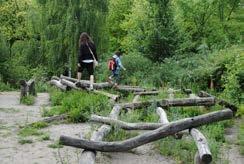
To attract more school leavers into the profession of landscape architecture, it is important to raise awareness of the profession, highlight its relevance, and provide opportunities for students to explore the field. Here are some possible initiatives that universities, professionals, and the Landscape Institute can undertake:
Outreach programs: Universities, professionals, and the Landscape Institute can collaborate to develop outreach programs that introduce high school students to the field of landscape architecture. This can include workshops, design challenges, and tours of landscape architecture projects.
Mentorship programs: Universities and professionals can develop mentorship programs that connect high school
students with practicing landscape architects. This can provide students with the opportunity to learn about the profession, gain hands-on experience, and receive guidance from professionals.
Scholarships and internships: Universities, professionals, and the Landscape Institute can offer scholarships and internships to high school students who are interested in pursuing a career in landscape architecture. This can provide students with financial support and practical experience that can help them succeed in the field.
Career guidance: The Landscape Institute can provide career guidance to high school students who are considering a career in landscape architecture. This can include information on educational pathways, professional development opportunities, and job prospects in the field.
08 DAY TRIP- MANCHESTER
MAYFIELD PARK CASTLEFIELD VIADUCT

The first new city park in Manchester for 100 years.
A 6.5-acre parkland, with 142 trees, 120,000 shrubs and plants, as the park features a kids’ play zone with 6 slides, all woven around the daylighted River Medlock – one of Manchester’s founding rivers.
WHAT SUSTAINABILITY MEASURES HAVE BEEN INTEGRATED INTO THE PARK?
The River Medlock has been uncovered and rejuvenated, creating a new habitat for wildlife. The park contains a number of new measures to support biodiversity, including kingfisher posts, bat bricks, and bird boxes. Many species are already returning to Mayfield, including fish and birds!
Whenever possible, existing materials and structures have been reused and recycled across Mayfield. The site has a unique industrial heritage that will be celebrated and revived to form a place for the future rooted in its past.
The cavernous Depot building, railway arches and three bridges have been retained, and historic details such as the Mayfield Baths tiles preserved and saved for use elsewhere on site. Materials have also been sourced locally to minimise the environmental impact of the development and construction process.

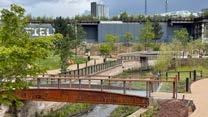




The project is part of a wider repurposing of brownfield and former industrial space in Manchester promoting the city as a go-to place for innovative urban development in housing and green and open space.
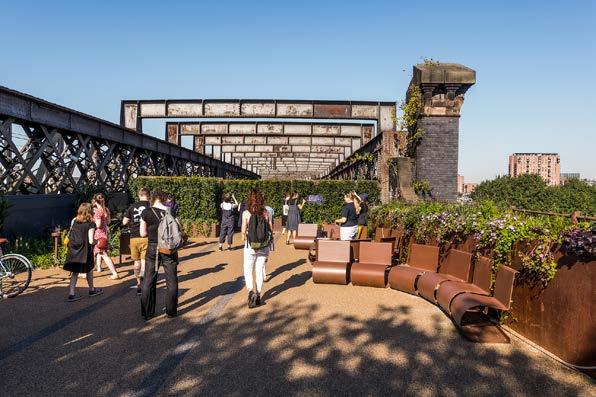 A new park in Manchester
Manchester’s new park in the sky
A new park in Manchester
Manchester’s new park in the sky
09 PERSONAL MANIFESTO
Five years ago, if someone asks me if I want to be a Landscape Architect, I would say No, I don’t even know what Landscape Architecture is.
If anyone asks me the same question today, my answer is I don’t know what else I can be

I was born and raised in Vietnam, a country that is extremely beautiful in terms of the natural landscape, where there are many tropical forests on the high mountains and the coast stretching along with the country, where has peaceful villages with breathtaking landscape. But I grew up in a dynamic cities with rapid economic development, skyscrapers and lack of greenery. Perhaps my passion for landscape architecture begins when I visit my hometown. The beauty in rice field and lotus pond, boating in lagoons and sightseeing wildlife habitats. It was this love for stunning landscape of my country that I developed at a young age that led me to be an architect. I have dreamed many times about being able to create interesting green spaces
Until I worked in an architecture firm, I participated in a design group of an ecotourism project and was assigned to take charge of the design of resorts. By seeing the vast natural landscape and researching on ecological environment issues and tourism have gained practical knowledge, and teamwork skills, especially have a deeper insight into Landscape Architect, and gradually realized that I have an interest in this industry.
Furthermore, while working in this industry I was aware that the problems of the cities in my country- a developing country are the shortage of urban landscape spaces and the inefficiency of such spaces for the use of human. I realized the importance of designing landscape architecture that not only creates spiritual values for users but also creates economic and environmental values for an entire area. Besides, Vietnam is a country with strong urban development and many landscape resources that need to be invested and developed with great potential in the future, therefore, currently, there is a huge demand for experts in this industry. However, this is a relatively young field in my country, there are not many specialized training courses in Landscape design.



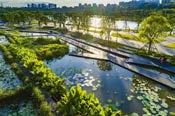
My return to study a masters in the UK has allowed me the time and resources to delve deeper into issues I care about like environmentally sustainable design and special educational needs. I found an opportunity to acquiring cognitive and concern about the major challenge of the twentyfirst century—global urbanization, natural disasters, and climate change—all involve landscape architecture. They are interrelated, and landscape architects can and must address them with scientific knowledge, holistic perspectives, and creative imagination. I believe that landscape architecture is the future of urban and human. We are living in a time of intense change with an amazing revival taking place as society, governments, and stakeholders begin to appreciate the true value of the landscape for enviromental and human living quality.
My ambition is to use the knowledge and vision of the world about landscape architecture to help my country and its cities cope with the time when it is facing the development that is taking over the landscape and the environment. Perhaps the landscape solutions that I am looking for to balance economic, social and environmental development are the answer for the future. But firstly, in the near future I would like to learn more and see what the world and landscape architecture is like with a job at a landscape firm in UK. I am interested in large scale projects in the context of urban landscapes or urban development in rural areas. And back to my country, I desire to work as a landscape projects consultant for tourism development in the direction of sustainable development.
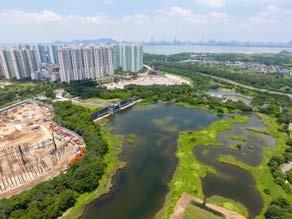 A tourist attraction in my hometown
Rice field in Viet Nam
Viet Nam tourist landscape
Turenscape Wetland park in urban Hong Kong Wetland park in middle of city
A tourist attraction in my hometown
Rice field in Viet Nam
Viet Nam tourist landscape
Turenscape Wetland park in urban Hong Kong Wetland park in middle of city





























































 A new park in Manchester
Manchester’s new park in the sky
A new park in Manchester
Manchester’s new park in the sky





 A tourist attraction in my hometown
Rice field in Viet Nam
Viet Nam tourist landscape
Turenscape Wetland park in urban Hong Kong Wetland park in middle of city
A tourist attraction in my hometown
Rice field in Viet Nam
Viet Nam tourist landscape
Turenscape Wetland park in urban Hong Kong Wetland park in middle of city